LAB REPORT
Science and Technology Making Headlines
July 29, 2016

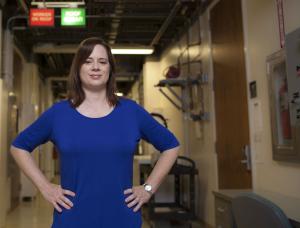
Lawrence Livermore National Laboratory chemist Dawn Shaughnessy says discovering even heavier elements will take a “heroic effort.”
Looking for the magic number
The latest elements to be discovered take the total to 118, but how much bigger will the periodic table get?
Dawn Shaughnessy of Lawrence Livermore National Laboratory was a member of the team behind three of the newest elements (tentatively named moscovium, tennessine and oganesson). She says that in order to make even heavier elements, the experiments will have to radically change the fusion process (two elements fusing together) or have the experiments run for longer amounts of time.
“It will be a real heroic effort to get a 120,” Shaughnessy said.
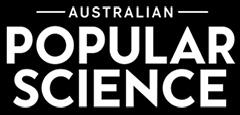
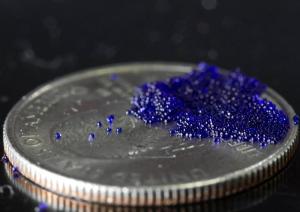
LLNL researchers created microcapsules containing sodium carbonate solution to rid carbon emissions from power plants. Photo by John Vericella/LLNL
Clearing the air
As carbon pollution cooks the planet, scientists are looking for ways to scrub the heat-trapping gas from the atmosphere and return it to the ground.
Trees, nature’s original carbon vacuum, are still the best tool for the job. Artificial approaches to carbon capture have remained too expensive to be practical on a large scale, but several new technologies show promise.
Scientists at Lawrence Livermore National Laboratory have developed a tiny carbon-trapping capsule. Carbon dioxide penetrates the capsule’s permeable polymer shell. The sodium bicarbonate inside reacts with the greenhouse gas, preventing escape. Researchers are now 3D printing using capsules.
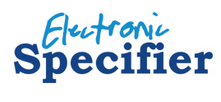
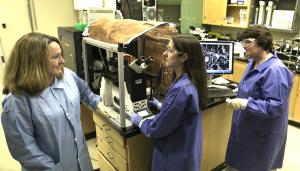
New research led by Lawrence Livermore scientist Heather Enright (center) resulted in the first successful integration of adult human peripheral nervous system (PNS) cells on a microelectrode platform. Photo by Julie Russell/LLNL
A chip off the peripheral nervous system
For the first time, Lawrence Livermore researchers have successfully incorporated adult human peripheral nervous system (PNS) cells on a microelectrode platform for long-term testing of chemical and toxic effects on cell health and function.
The study is part of a project known as iCHIP (in-vitro Chip-Based Human Investigational Platform).
Ultimately, scientists say the research will provide a non-invasive testing platform outside the human body that will predict human exposure to drugs and toxins more accurately than animal studies.

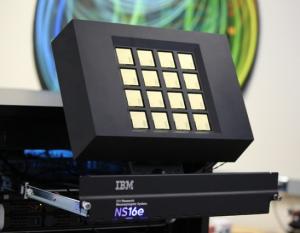
Lawrence Livermore received the 16-chip IBM TrueNorth platform earlier this year.
Computers on the brain
Looking at current trends, computers will use more energy than we produce. At the same time, computing efficiency will improve to prevent this disaster from happening.
Neuromorphic computing, which tries to mimic the nervous system, could help with the efficiency issue.
Earlier this year, Lawrence Livermore and IBM revealed a new deep-learning supercomputer they say could boost artificial intelligence systems.
Based on a "neurosynaptic" computer chip called IBM TrueNorth, it can replicate the equivalent of 16 million neurons and 4 billion synapses - yet consumes just 2.5 watts, the energy equivalent of a hearing aid battery.

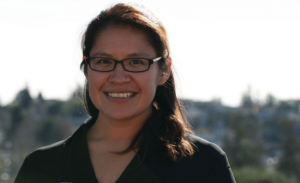
Suzanne Singer is an LLNL engineer who prides herself in getting students interested in STEM careers.
Singing the praises of STEM
Suzanne Singer is doing important work in the science, technology, engineering and math (STEM) world. She received her Ph.D. in mechanical engineering at UC Berkeley and works as a staff engineer at Lawrence Livermore National Laboratory.
Singer recently talked about her research in STEM, Native American women in STEM, how society can encourage girls in math, how STEM opportunities for Native Americans can be more accessible and how feminism can be more inclusive to Native American voices.
“I have been tutoring since high school, and really enjoyed helping others understand mathematical concepts,” she said. “While in graduate school, I started thinking more philosophically about the challenges of STEM education in underrepresented communities. Being one of a handful of Native American Ph.D. students at Berkeley in a STEM program was proof of the lack of representation in higher education. Since then, I’ve recruited for both graduate programs and national labs.”





